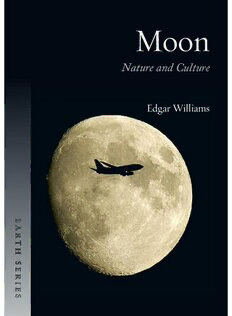
Moon: Nature and Culture PDF
Preview Moon: Nature and Culture
Moon Nature and Culture Edgar Williams moon The Earth series traces the historical significance and cultural history of natural phenomena. Written by experts who are passionate about their subject, titles in the series bring together science, art, literature, mythology, religion and popular culture, exploring and explaining the planet we inhabit in new and exciting ways. Series editor: Daniel Allen In the same series Air Peter Adey Desert Roslynn D. Haynes Earthquake Andrew Robinson Fire Stephen J. Pyne Flood John Withington Islands Stephen A. Royle Moon Edgar Williams Tsunami Richard Hamblyn Volcano James Hamilton Waterfall Brian J. Hudson Moon Edgar Williams reaktion books To Royden Published by Reaktion Books Ltd 33 Great Sutton Street London ec1v 0dx, uk www.reaktionbooks.co.uk First published 2014 Copyright © Edgar Williams2014 All rights reserved No part of this publication may be reproduced, stored in a retrieval system, or transmitted, in any form or by any means, electronic, mechanical, photocopying, recording or otherwise, without the prior permission of the publishers. Printed and bound in China A catalogue record for this book is available from the British Library isbn978 1 78023 281 2 contents Introduction 7 1 Lunar Shadows 11 2 Time and Motion 38 3 Stories and Legends 68 4 Man and the Moon 89 5 Lunar Art and Literature 107 6 One Small Step for a Man, One Giant Leap for Mankind 147 7 Legacy 172 Timeline for Moon Landings 178 references 180 select bibliography 188 associations and websites 189 acknowledgements 191 photo acknowledgements 192 index 194 Introduction Ever since humans evolved from their earliest origins on the African plains several million years ago, the Moon has hung in the sky unchanged, passing monthly and unerringly through a cycle – at first a totally full, silvery-white orb lighting up the night sky, then briefly disappearing altogether before returning to its original glory. The story of the Moon starts before life appeared on Earth. The Moon and Earth share a cataclysmic beginning in the early solar system around four billion years ago. Before the Moon was born, the newly formed Earth was still in its early throes of cooling down and solidifying when it was hit hard by another proto-planet of a similar size and was smashed apart by the huge impact. When the material reformed, the Earth and Moon were born largely as we know them today. For another two billion years the Earth and its offspring continued to be shaped by internal and external forces as debris rained down from space and volcanic action sculpted the surface through the ejection of copious quantities of lava and ash. With time, as the solar system slowly matured, the Moon settled into orbiting the Earth, seem- ingly content with its lot. The Earth, however, continued to develop. Because of its larger mass it held its atmosphere, and after gaining the lion’s share of material during the collision was able to retain water that had rained down on its surface from stray comets, and through volcanism and plate tectonics constantly re-sculpt its surface, eventually allowing life to evolve. This life in turn altered the atmosphere and slowly human beings began their 7 Introduction rise to consciousness and ultimately their ambition to conquer the globe, which through the millennia had acted like clockwork, giving humankind the ability to organize time, allowing nations to rise and civilizations to flourish. Before the Moon landings, the astronomer Patrick Moore (1923–2012) said, ‘As the years passed in their millions, the fury died down, until at last the roar of the volcano was only occa- sional; and about the time the first sea-creatures appeared in the warm oceans of our own world, the Moon subsided into its long sleep – a sleep from which it will only be awakened by the coming of man.’1 In early antiquity, from the seventh to the eighth century bc, around the world and particularly in Asia and Europe, the Moon was worshipped as a deity along with many other gods and often paired with the Sun, sharing the sky as a sibling or loved one. The coming and going of the Moon as it arced across the sky traced a regular monthly journey, which to the ancients repre- sented the cycle of life, death and resurrection. To these early observers, the Moon was mysterious and seemed to influence the weather and it soon became associated with water and dampness. By late antiquity, as the Roman Empire established itself in Constantinople after the sixth century ad, and with the adoption of monotheism across Europe and the Middle East, the Moon, although still important to religious practice, had been demoted to a mere celestial body. Persian, Arab, Greek and Roman astro n - omers, having observed the Moon for centuries, now tracked and predicted its every move, phase and eclipse, all with quite amaz- ing accuracy. This led to using each lunation (the time between each new Moon) as a unit of time –a month –allowing the dates of religious festivals such as Easter and Ramadan to be celebrated together across the vast Persian, Roman and Arab empires. Even though the Moon lost its status as a deity, the idea that it influenced our psyche did not wane and many believed that The Man in the Moon, madness was associated with the Moon. Excessive exposure to a benign modern moonlight in the womb, at birth or while asleep was considered symbol of man’s link sinister and those under such lunar influence were considered to with nature and the sky above. be suffering from lunacy, a particular affliction that was episodic 9
